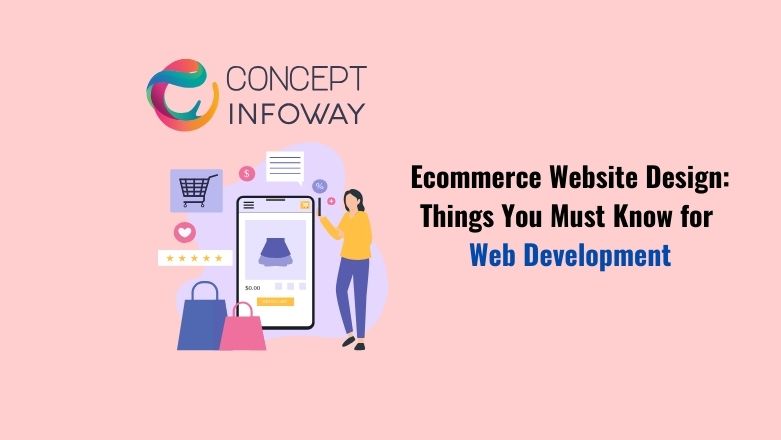
Ecommerce Website Design: Things You Must Know for Web Development
In the bustling digital marketplace of Greenville, SC, having a robust eCommerce website is crucial for businesses aiming to thrive. Web design plays a pivotal role in capturing the attention of potential customers and converting visits into sales. Here are the essential elements you need to know about Ecommerce website design to ensure your web development project is successful.
Understanding User Experience (UX)
The foundation of any successful Ecommerce website design is its user experience (UX). A seamless, intuitive UX design keeps visitors engaged and encourages them to explore your offerings. Here are key components to consider:
Navigation and Layout
Your website’s navigation should be straightforward and intuitive. A well-organized layout with clear menus and categories helps users find what they’re looking for quickly. Ensure that important links, such as product categories, the shopping cart, and customer support, are easily accessible.
Mobile Responsiveness
With a significant portion of users shopping on their mobile devices, your Ecommerce website design site must be mobile-friendly. Responsive design ensures that your website adjusts seamlessly to different screen sizes, providing a consistent and enjoyable experience across all devices.
Loading Speed
Fast loading times are critical. Studies show that users abandon websites that take too long to load. Optimize images, use efficient coding practices, and leverage content delivery networks (CDNs) to enhance your site’s performance.
Design Elements That Boost Conversion
Aesthetic appeal and functionality must go hand-in-hand in Ecommerce website design. Here are design elements that can significantly impact your conversion rates:
High-Quality Images and Videos
Visual content is king in the Ecommerce Website Design world. High-resolution images and videos of your products allow customers to get a detailed view, which can help them make informed purchasing decisions. Include multiple angles, zoom features, and even 360-degree views where possible.
Consistent Branding
Maintain a consistent brand identity throughout your site. Use your brand colors, logos, and fonts to create a cohesive look and feel. Consistent branding builds trust and makes your business more memorable.
Clear Call-to-Actions (CTAs)
Your CTAs should be compelling and easy to find. Whether it’s “Add to Cart,” “Buy Now,” or “Subscribe,” make sure these buttons stand out. Use contrasting colors and persuasive language to encourage users to take the next step.
Essential Features for Ecommerce Website Design
An effective eCommerce site needs to have specific features to ensure a smooth shopping experience. Here are some must-have features:
Secure Payment Gateway
Security is paramount in online transactions. Integrate a reliable and secure payment gateway to protect customer data. Offering multiple payment options like credit cards, PayPal, and other digital wallets can also improve the user experience.
User Reviews and Ratings
Including a section for user reviews and ratings builds credibility and trust. Potential customers often rely on the experiences of others before making a purchase. Ensure that reviews are easy to access and contribute to your overall site design.
Detailed Product Descriptions
Informative product descriptions can make or break a sale. Provide comprehensive details about each product, including specifications, sizes, colors, materials, and any other relevant information. Good descriptions reduce the likelihood of returns and increase customer satisfaction.
Inventory Management
For an Ecommerce website design for business, effective inventory management is crucial. Implement a system that updates stock levels in real-time, ensuring that your site accurately reflects product availability. This prevents overselling and keeps customers informed.
Customer Support Integration
Offering robust customer support options can enhance the shopping experience. Include live chat, email support, and an extensive FAQ section. Quick and helpful customer service can turn a frustrated visitor into a loyal customer.
Search Engine Optimization (SEO) for Ecommerce Website Design
To attract traffic to your site, you need to be visible in search engine results. Here are some SEO strategies to boost your eCommerce site’s visibility:
Keyword Research
Identify relevant keywords that your potential customers are using. Tools like Google Keyword Planner, SEMrush, and Ahrefs can help you find the best keywords to target. Focus on long-tail keywords specific to your products and niche Ecommerce website design
On-Page SEO
Optimize your product pages with relevant keywords in titles, meta descriptions, headings, and body content. Ensure that your URLs are clean and include keywords where possible. Alt tags for images should also be optimized.
Content Marketing
Create valuable content that attracts and engages your audience. Blog posts, how-to guides, and product videos can draw visitors to your site and improve your SEO rankings. Content marketing not only helps with SEO but also positions your brand as an industry authority.
Backlink Strategy
Build a robust backlink profile by acquiring links from reputable sites. Guest blogging, influencer partnerships, and collaborating with industry publications can help you gain quality backlinks, which boost your site’s authority and search engine rankings.
Analytics and Continuous Improvement
Launching your eCommerce site is just the beginning. Continuous monitoring and improvement are essential for long-term success.
Use Analytics Tools
Utilize tools like Google Analytics and other eCommerce-specific analytics platforms to track your site’s performance. Monitor key metrics such as traffic sources, bounce rates, conversion rates, and average order value. These insights can help you make data-driven decisions to enhance your site.
A/B Testing
Regularly conduct A/B tests on various elements of your site, such as CTAs, product pages, and checkout processes. A/B testing helps you identify what works best for your audience and can lead to higher conversion rates.
Customer Feedback
Listen to your customers. Solicit feedback through surveys, reviews, and direct communication. Understanding their needs and pain points can help you make necessary adjustments to improve their experience.
Conclusion
Creating a successful Ecommerce website design involves more than just attractive design; it requires a strategic approach to user experience, functionality, SEO, and continuous improvement. By focusing on these key areas, you can build an eCommerce site that not only attracts visitors but also converts them into loyal customers. Whether you’re starting from scratch or revamping an existing site, these insights will guide you toward a successful web development project in Greenville, SC. Kindly follow us on Facebook and Read more about us.

